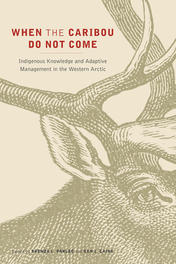Browse by Category
Browse the category list to the right to find BC books grouped by industry standard headings. To see our curated lists of BC books by region or special-interest subject area, visit our BC Reading Lists page.


THE TREE THAT'S ME
As they pass by in cruise ships, tourists can at least enjoy the sight of our conifers. I haven't counted the number of evergreens on our couple of acres, but I guess there are enough to help sustain the image of Saturna as a treed paradise.
Most of our trees are coastal pine of one kind or another. The young pine are comely, the old gaunt, or half-fallen. Many have small, vivid green candlesticks at the branch ends, as though the woods were having a birthday party. We have a lifetime supply of these perfect Christmas trees, but I have so far resisted the temptation to save $20 by chopping one down. I would sooner put the Christmas presents under the living tree, even though this meant opening them in a blizzard. We arbophiles are prone to going to extremes.
Not all cottagers share this addiction to trees. We can, in fact, be split into two adverse groups: those who have felled all the trees within striking distance of their cottage, boat, driveway or outdoor pool, and we others-the decent sortwho are willing to test our insurance policies by living right under a fifty-foot fir, and watching our gutters fill up with nutbrown needles.
In fact, nothing has tested my environmental integrity more than having a power line violate the property. If you have tears, prepare to shed them when the hydro peopleheads as hard as their hatsshow you how many trees must be removed at your expense, in order to spare their precious line some minor accident, like having a big cedar wipe it out.
Picky, picky, picky.
For years I resisted the ultimatum, preferring to depend upon candles and a generator which, like all generators, made combustion of gas rival the sound effects of World War 11. Now, candles are romantic. In earlier cultures, much of the world's population explosion was facilitated by people who didn't get a good look at each other after dark, thanks to candlelight.
A wax-drabbled taper stuck in an empty wine bottle also helps to create the proper ambience for the poet dying of consumption. I've never found that it helped my verse, but then my problem is a minor rhinitis.
Also, candles, to be effective as a charming source of light, must be lit. I don't know how John Keats and Samuel Taylor Coleridge lit their candles or lamps, but I doubt they tried to use those foldover paper matches. "The Eve of St. Agnes" would have been a very long night if John had. The main reason I yielded to BC Hydro to light the lamps and warm the baseboards was that if I went on depending on candles and stove I would be found frozen stiff in a dark cottage, my fingers clutching an empty packet of matches from El Diablo's.
Prometheus paid the price for pinching the secret of fire from the gods, but being chained to a rock and having a vulture scoff up my liver would be less mortifying than my flubbing the simple ignition that Humphrey Bogart always aced, first try.
But I had no trouble lighting the fire of fury in several neighbouring cottagers when the extended power line required the felling of additional trees along the road. They had mastered lighting matches, and they had nothing but contempt for the clod who hadn't. I knew the pariah status of a developer, that most loathsome of Earth's desecrators. I lived in fear of being set upon by David Suzuki and banned from travel in Germany, where they seem to feel very strongly about trees. For a time, my name was sawdust. I had fulfilled the first condition for becoming a hermit.
Luckily a few other cottagers along the road-equally inept with paper matches-have since availed themselves of the power line, so that we now have a fairly even balance between the Hatfields and the McCoys.
One tree that I took special pains to preserve, despite its rakish encroachment on our jakes, is our arbutus. Our sole arbutus. Our only tree that has leaves instead of needles. Glossy, go-green leaves, and a yellow bark as frivolous as a Spanish dancer's skirt. It peels, revealing a curvaceous trunk that mocks the staid form of the conifers. Our arbutus stands out like a stripper amid the Mormon Tabernacle Choir.
This tree is rarely seen in the wild on the Mainland only forty miles northeast. The southern Gulf Islands are just that shade sunnier and drier, needed to succour this exotic kin of the madrona abundant on the west coasts of California and Mexico. Just looking at our madrona makes me feel semitropical . . . sensuous . . . ready for siesta.
However, I regret to report that our slender arbutus doesn't look too robust. It seems to be saying, "Si, I am vivacious, I am elegant and I am freezing my boles off."
The other tree I'm emotionally involved with is the ancient Douglas fir that stands, defiant as Horatius at the bridge, on the very brink of the cliff fronting the property. Decades of wind and wave erosion have undercut the cliff to the point where the great roots of this giant are what support the remaining verge, much as the reinforcing rods of steel furnish the intestinal fortitude of a concrete foundation.
This is not a beautiful tree. Joyce Kilmer to the contrary, almost any poem is more lovely than this tree. It is the sylvan equivalent of the old pugilist who has taken too many blows to the head and has let his body go badly, but is too stubborn to take the count.
Other trees along the cliff seem to lean away from the prevailing sou'easters that can gust to hurricane force. But not this battered old fir. It seems to lean into the wind. It roars, "Okay, Aeolus, gimme your best shot!"
Result: wind-shorn branches, twisted grotesques of naked limb, truncated, as warped as a politician's mind. And the topmost stub: the ideal perch for our eagle.
Here I should note that eagles have no use for deciduous trees. Leafy branches are merely impediments to the bold strokes of the eagle's six-foot wingspan, to say nothing of spoiling that peerless silhouette of bird against sky.
I am doubly glad to see the bald eagle posing atop the old fir tree because it suggests the tree isn't about to topple onto the cottage and, consequently, me. I trust that birds have acute sensory evidence of the stability of their perch. They can, I feel, detect the slightest tremor of a tree preparing to abandon the vertical. Our eagle wouldn't let me be coshed by a widow maker. I also believe in mutual funds.
On the other hand, it would be a spectacular way to go, for both the tree and me. Two specimens of old growth simultaneously felled by Time, instant quietus, and return to the bosom of Mother Earth for the nourishment of new life. Sure beats a nursing home.
Meantime, the remaining boughs of the venerable fir are green enough to indicate the sap still rises - an inspiration to my own circulatory system. Hang in there, Douglas.
LEARNING TO LOVE SHARP OBJECTS
The joy of chopping wood-that's the upside of downed trees. When I return to the cottage and find that a windstorm has claimed another of our sylvan host, I solace myself with the thought that I haven't lost a tree, I've gained a log. For one brief moment, I can identify with the forest industry.
The ensuing exercise - so therapeutic for both body and spirit - begins with the dissection of the corpse into butts of a length to fit into your stove or - for the nabob - the fireplace. This exhilarating task calls for a saw. A steak knife, I've found, prolongs the operation to the point where it starts to become tedious.
The purist - ever conscious of his or her duty to keep the neighbourhood noise level down - uses a handsaw to buck the log. In order to complete the job in your lifetime, however, the log needs to be of a diameter no greater than your arm. This pretty well destroys your self-image as a Paul Bunyan, despite the purchase of a red checked shirt.
For lopping larger logs, the tool of choice is, of course, the chainsaw. I own a chainsaw, and sometimes take it out of its cage to check its teeth, but I can't bring myself to pull the chain - or whatever it is that arouses the beast. I am told that it can't hurt me much, unless I put gasoline into its revolting stomach. Since I can have problems putting gas into the tank of my car - a relatively simple kind of intercourse - it is absurd even to consider giving my chainsaw a highly flammable liquid to play with.
Why then do I have a chainsaw? To create a false impression of virility? For those making inventory of my estate? ("Yes, whatever his shortcomings as a novelist, he does appear to have been a true man of the woods.")
No. I bought the chainsaw for my son, Chris, at the time he was renting the cottage. When he returned to the city, he left the chainsaw behind - a token of its sentimental value. I can understand why the parting was without tears. It is hard to become attached to something whose whole raison d'etre is to massacre things. Mounted over the fireplace, it doesn't fool anyone as a trophy sawfish.
So I hire a professional tree faller to buck my prostrate trees for me. I'd prefer that he did it at night, without lights, but one can't have everything.
After the faller has driven quietly away, I lug the butts one by one to the woodpile, thereby gaining new insights into pitch. I learn to cry out with Lady Macbeth: "Who would have thought the old man to have had so much blood in him?"
It can be disconcerting to try to toss a fifty-pound length of gummy pine onto the woodpile, only to become airborne with the butt. This sport combines all the elements of weightlifting, shot put, long jump and kinky sex that involves Krazy Glue. Because it is such strenuous activity, the cottager should never go wood-piling alone. He or she should have someone standing nearby, or at least close enough to hear a scream.
This precaution also applies to the second phase of wood-piling, namely the actual chopping of the blocks. Since it takes a couple of years for a butt to dry enough for chopping, the cottager can safely invite the uninvited guest to try his luck with the axe. Good vibes were never better than those created by blade smiting impenetrable wood.
Even a mature block can be surprisingly unreceptive to the axe. It must first be split into smaller segments with the highly theoretical assistance of an object called a maul - whose name says it all. The maul looks like an axe head without the handle. It is much heavier than it looks, and shouldn't be dropped on your foot unless you're really tired of having toes make holes in your socks.
In order to insert the maul into the block, the operator will need three hands and a sledgehammer. Trying to save money by using the back of the axe head, a large rock or your Nike walker is, in my experience, false economy. A person can pick up a previously owned sledgehammer at any local penitentiary, at reasonable cost, and enjoy the pleasure of ownership.
Once the maul has segmented the block, we enter the orgasmic phase of wood-chopping: the actual impact of axe on fibre. Nimble reflexes are required to balance the segment on the chopping block and axe it before it topples over. Some training as a headsman would be useful here, though perhaps not worth interning in Saudi Arabia.
At last, bloody but unbowed, we have the makings of that wonderful, satisfying and dependable heating unit: the woodpile. A security blanket with bark. A fragrant safety deposit box, six feet high and twenty feet long. A highly visible monolith that says, "Here lives a person who provides for Tomorrow and, if the weather holds, Next Week."
The cottager can look as slovenly and poorly put together as he likes, as long as he wears a tidy woodpile.
Should he shelter this treasure in a woodshed? Only if he owns young children who need a behaviour modifier. Today the woodshed is associated with child abuse. Why attract social workers?
Inside the cottage sits the woodpile's offspring: the woodbox. Some people, those in fancier places, insist the woodbox live outside, under the deck. Not me. I want my woodbox right next to the woodstove. If I want a touch of class, I supplement the kindling with old issues of the Sunday Times of London.
Here I must say something about the woodstove. Every cottage must have one, of course, regardless of whether the place is fully heated by electric baseboards, radiant heating or a regular visitor with a really warm personality. Ideally the woodstove has a smokestack. It may seem a bore, having to make a hole in the roof to accommodate fifteen feet of black pipe, but unless the rest of your decor is styled to a Kwakiutl longhouse, and you don't mind breathing smoke as long as it's nicotine-free, the stack's an artifact of life.
The larger drawback to furnishing a cottage with a good oldfashioned pot-bellied woodstove that glows cherry-red is that it will cause overheating in a building inspector, besides making your insurance premium rise like a hot-air balloon. To gain the approval of the hawkshaws, it is necessary to install a governmentapproved woodstove that
doesn't allow heat to escape in any direction but up the chimney. I replaced my condemned old woodstove with one of these new models, natty with brass trimmings and neat little feet, and I can attest that the stove is a fireman's dream.
I can perk a pot of coffee on it in a matter of days, and the draft is cleverly designed to have several positions to deny admittance of air.
This woodstove dispenses with a grate, because the wood doesn't burn long enough to produce ash. I can burn the same piece of wood all week, just turning it from time to time to make sure it's evenly done.
However, having paid big bucks for this new, approved woodstove, I sit in front of it, close my eyes and imagine that where there's smoke there's fire.
Outdoor fires are also severely regulated on the island. We have to wait until October to incinerate the lopped limbs of trees we have lost. The Fall Burn celebrates the end of the Dry Season, regardless of whether we had one. The bonfire is repeated by cottages along the Saturna cliff, part of the fun being the chance that the Puget Islanders across the water will see the bonfires as a signal that Canada is about to attack the United States for catching our salmon in their confounded Mare Nostrum. One good international incident deserves another.

When Someone You Know has Dementia






